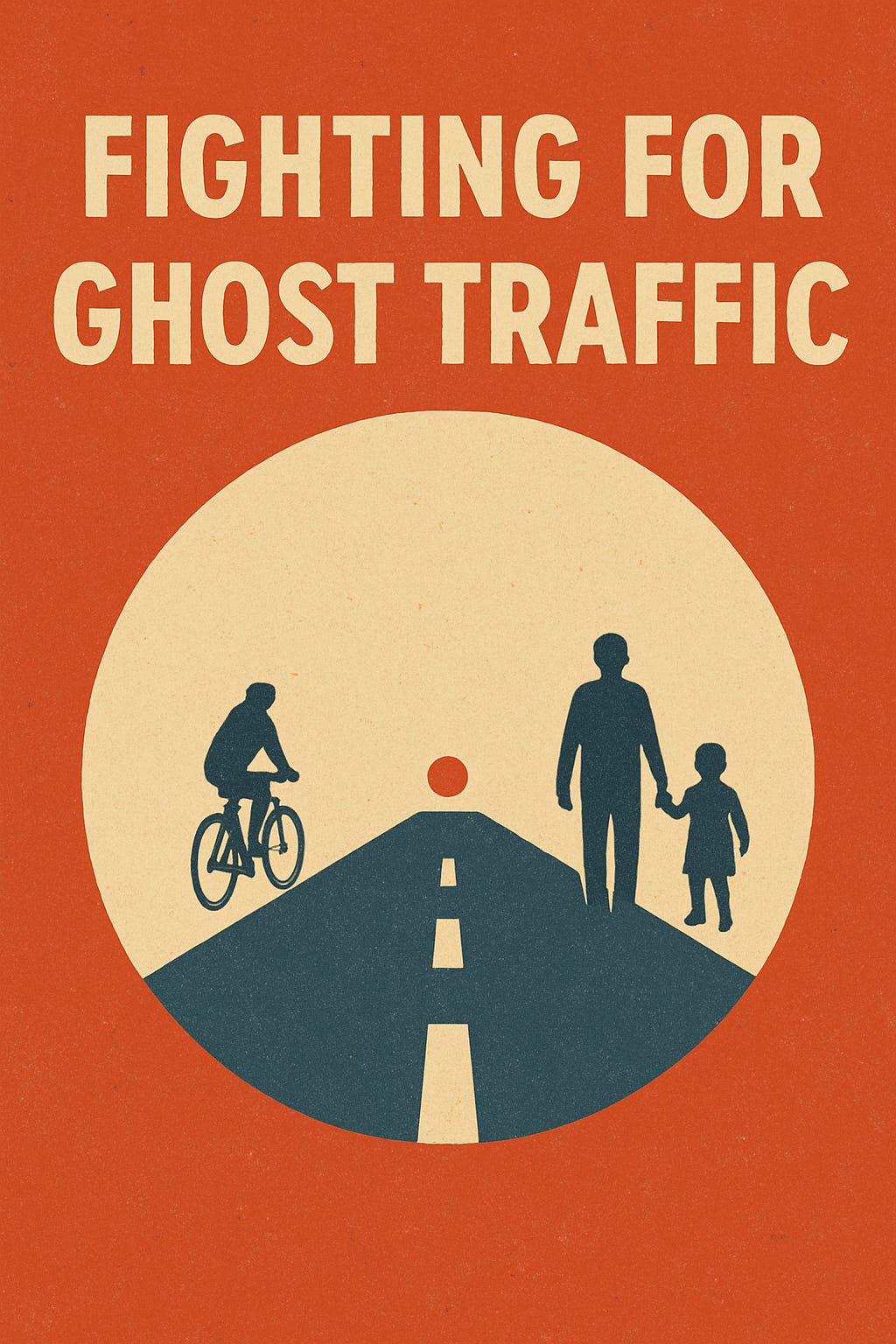Fighting for Ghost Traffic
San Francisco's real traffic problem isn’t congestion. It’s nostalgia.
TL;DR
San Francisco traffic volumes are still below pre-pandemic levels — on the Great Highway, they’re down 38% from 2018.
Across the city, vehicle counts remain depressed, even though congestion feels worse.
The pandemic triggered a mindset of scarcity and a heightened sense of entitlement around private car infrastructure.
Today’s fights to “reclaim” parking or driving lanes aren’t really about traffic.
They’re about emotional reactions to change — while the facts show we drive less, not more.
When I hear arguments that San Francisco’s traffic has gotten “worse” since the pandemic — especially around projects like the Great Highway Park — I’m skeptical.
The complaints sound visceral: it feels worse.
But feelings aren’t facts.
So I pulled data from SFCTA, SFMTA, MTC Vital Signs, and INRIX to compare pre- and post-pandemic traffic patterns.
Here’s what I found.
Traffic Is Down, Not Up
The numbers tell a very different story.
Traffic on the Upper Great Highway dropped sharply after the pandemic. In fall 2018, the corridor carried about 23,500 vehicles per day. By fall 2023 — even after reopening to weekday traffic — daily volumes had fallen to roughly 14,500. That’s a 38% decline.
The surrounding streets tell the same story.
Lower Great Highway’s traffic fell by 45%, and Sunset Boulevard — another often-cited overflow route — saw a 28% decline over the same period.
This isn't isolated. Across San Francisco, surface-street volumes remain below 2019 levels.
Regionally, Bay Area vehicle miles traveled fell more than 20% during the pandemic and have yet to fully rebound.
Even with traffic patterns shifting, congestion delays in 2023 were still 6% lower than they were in 2019.
In short: San Francisco is not overwhelmed by cars. It's adjusting to how and when people move — with fewer cars on the road overall.
Why Does It Feel Worse?
The numbers say one thing.
The emotions say something else.
The pandemic didn’t just change traffic. It triggered a mindset of scarcity — a loss of control over everyday life.
When streets were reimagined for walking, biking, and gathering, many saw it not as opportunity, but as another loss.
Programs like parklets, slow streets, and even experimental spaces like Sunset Dunes grew out of that pandemic urgency — fast changes to reclaim streets for people when the city needed them most. But as some of these experiments have evolved into permanent features, they've become potent symbols of a deeper shift: a world where space is shared differently, and the individual control drivers once took for granted feels diminished.
For many drivers, that shift echoes the same fear and frustration they experienced during the pandemic itself: a loss of autonomy, a loss of familiar patterns, a world remade without their consent.
And that fear often finds its easiest outlet in anger over traffic, parking, and change.
Other shifts have amplified these emotions:
Loss framing: Pandemic-era disruptions made people hyper-aware of any new “taking away” — like parking spaces or driving lanes.
Car entitlement: Public streets had long been treated as if they belonged to private vehicles. Reallocating them felt personal.
Enforcement collapse: SFPD citations for moving violations dropped steeply. With less accountability, even fewer cars can feel more chaotic.
Hybrid work: Noon now feels like rush hour. Congestion seems constant, even though overall volumes are lower.
The anger isn’t really about traffic.
It’s about grieving a loss of control — over space, over habits, over identity.
Where We Go From Here
We are not drowning in cars.
We’re drowning in perceptions of loss.
Instead of fighting to bring back a 2019 commute that no longer exists, San Francisco has a chance to move forward:
Enforce traffic laws with tools that work — speed cameras, curb management, better design.
Protect and expand spaces for people — parks, promenades, slow streets — not retreat into traffic nostalgia.
Design for how people live and move today — hybrid schedules, local trips, vibrant neighborhoods — not a version of the past that no longer fits.
The Political Flashpoint: Joel Engardio
Supervisor Joel Engardio, who co-sponsored the ballot measure to keep the Upper Great Highway closed to cars on weekends, now faces a recall effort.
Even though the measure passed citywide with strong support, localized frustration — rooted in a sense of loss and car entitlement — has turned him into a political target.
It’s a microcosm of the broader tension:
Do we design cities based on data and changing needs — or cling to nostalgia?
Engardio’s situation reminds us:
Leading meaningful change often means absorbing backlash — even when the numbers, the behavior shifts, and the long-term public good are clear.
The Choice Ahead
Every time we choose people over cars, we make the city stronger.
Every time we protect public space, we invest in a future that's more alive, more resilient, and more fair.
The real scarcity isn’t parking.
It’s imagination.
And San Francisco has never been a city that shrinks its dreams just to fit a parking space.




